SAP ISU Billing Master Data Config:
SAP ISU Billing Master
Billing Master Data:
1. Billing class
2. Operand
3. Rate
4. Schema
5. Rate type
6. Rate Cat.
7. Rate determination
8. Fact Groups
9. Price
Billing Class: Billing class classifies the installation, It group together multiple numbers of installations
According to billing class the rate category will be define.
For Ex: 1 billing class for Residential customer, 1 billing class for commercial customer and so on. If you go to ES30, We can see billing class and rate category.
Path- SPRO—SAP Utilties—Contract Billing—Billing Master Data—Define Billing Class
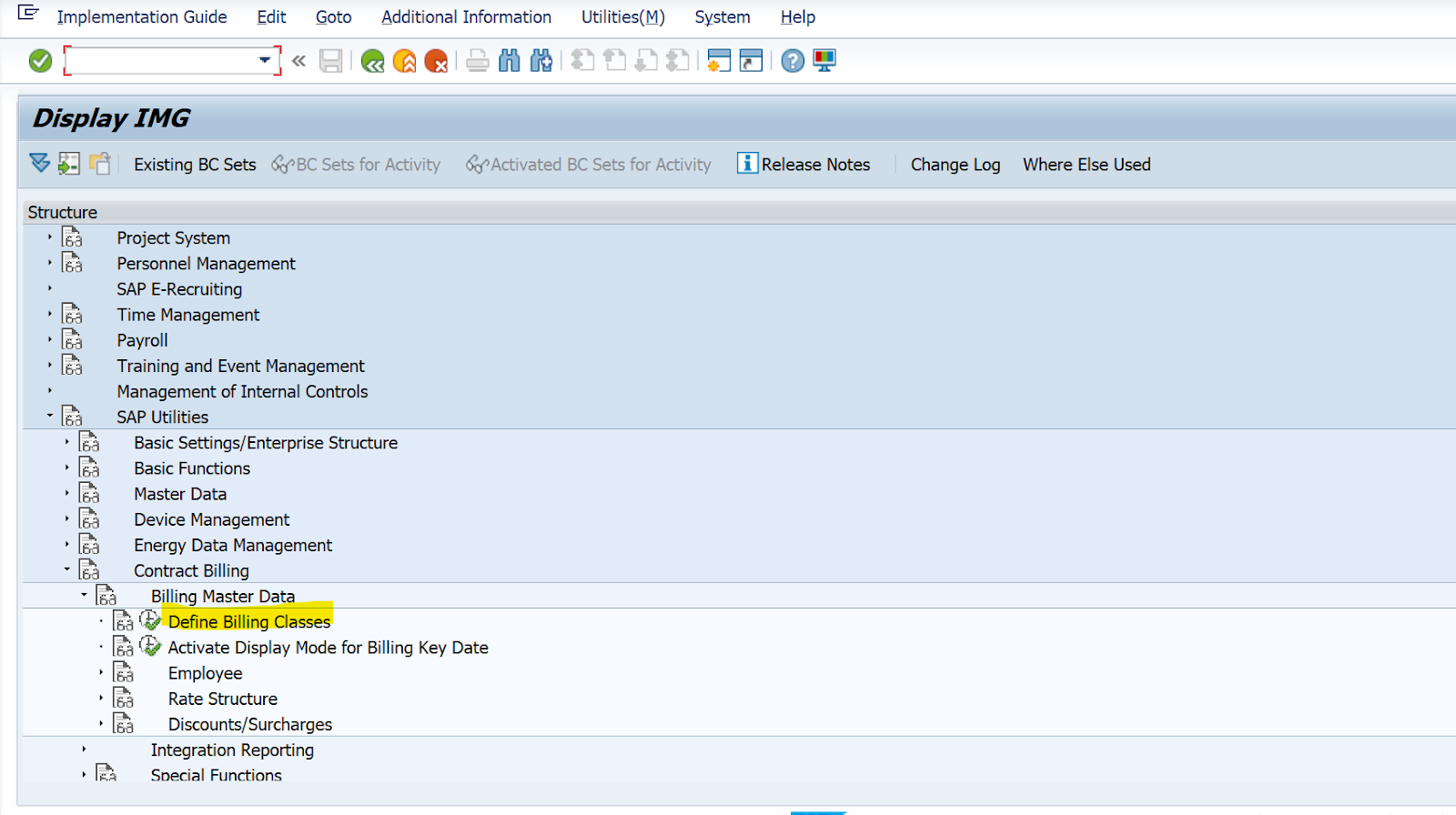

Here we define SK01 as our Billing class as a Residential customer.
Step2:
TCODE: EA50 –Operand
Operand is variable, Like if you calculate your energy bill: Ex: 100KWH is your monthly consumption,
If per unit charge= 10 then Amount= 100(Consumption)*10(Price), Here we are having 3 component so that mean we have to create 3 variable for each component.

Operant usage: It is defined as access control. When we do billing the variable here we maintain as 10-1 (Operand) in KWH but how the value would calculated that is based on meter reading consumption and register is calculated as consumption. So the value 10-1 comes from the meter reading result what we enter in the system from register.
Normal usage: We can use this as normal price variable , Value of the operand comes from the fact, if you want change , you may change it through price key. It will show at fact level.
RTP Operand: When we having smart meter, it will give consumption in interval. Let’s say 15 min. or 30 min, we ll received consumption but we can’t bill at every interval, so we need to have RTP design.

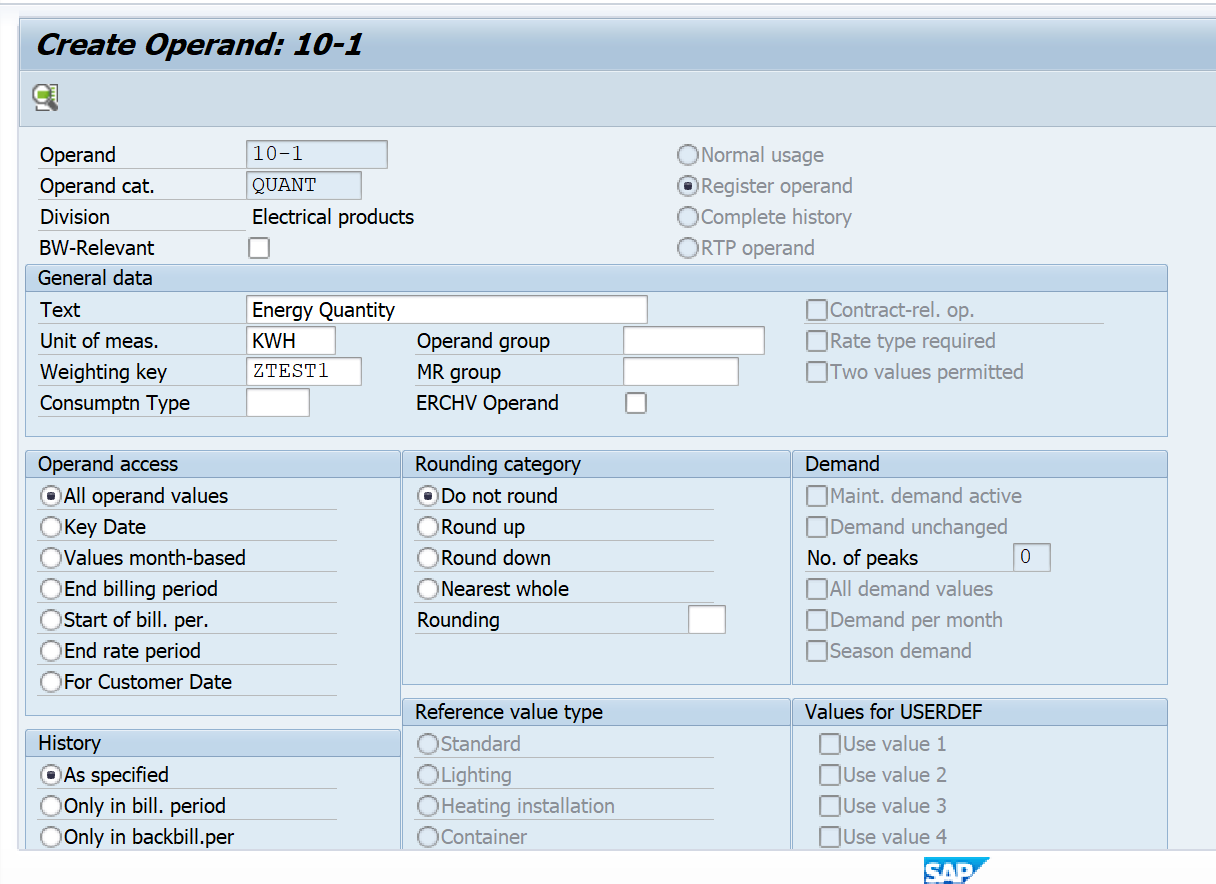
Price operant: 10-2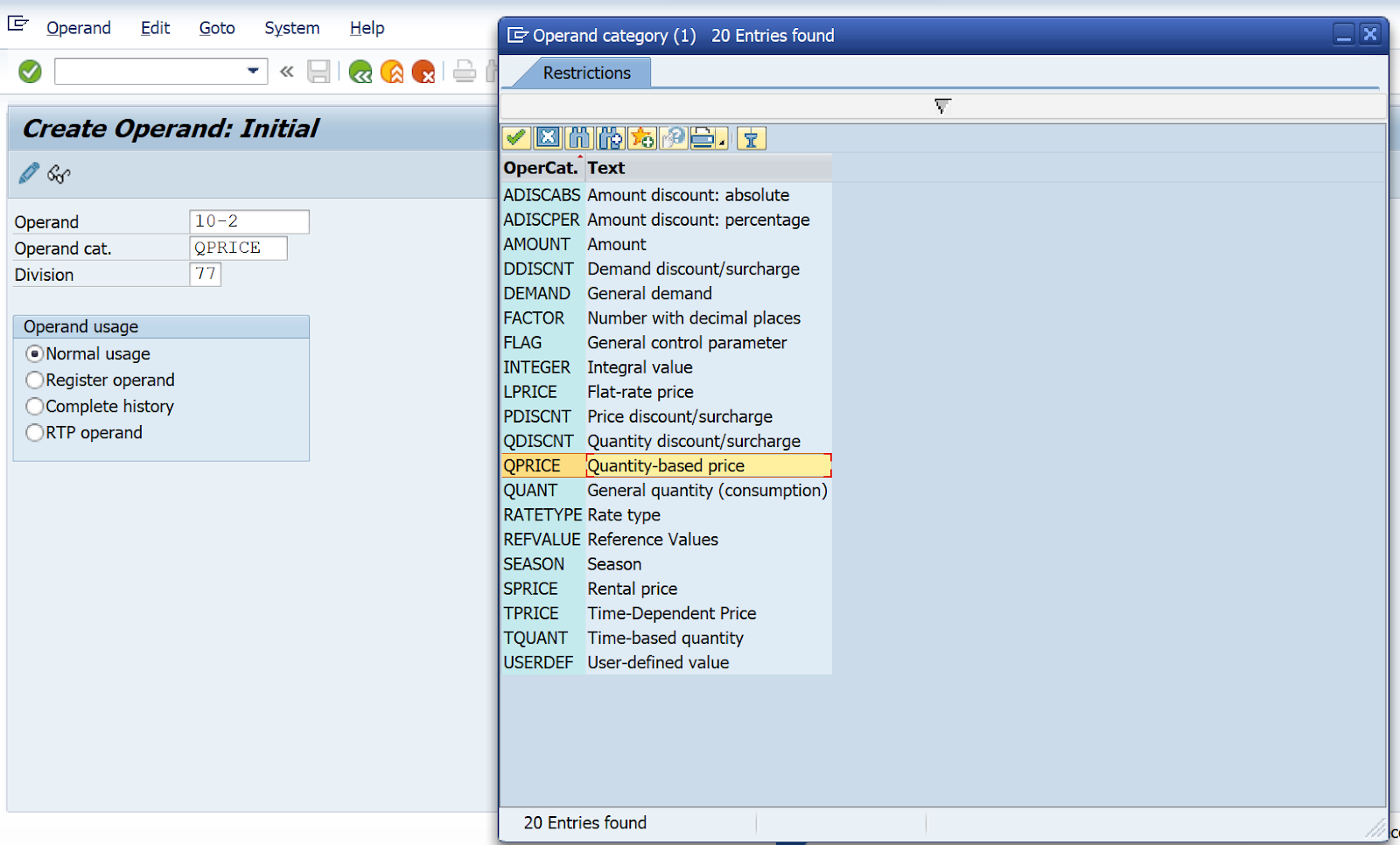
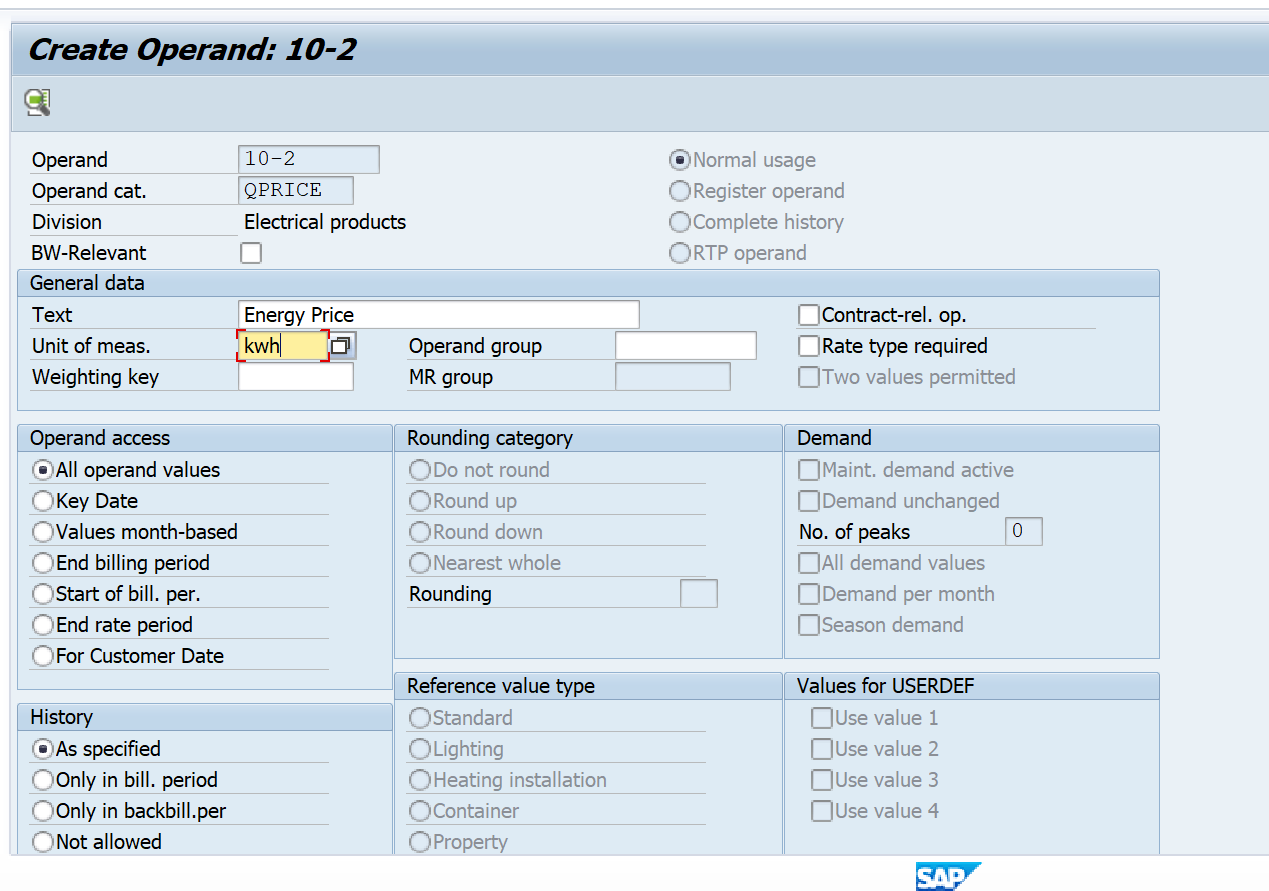
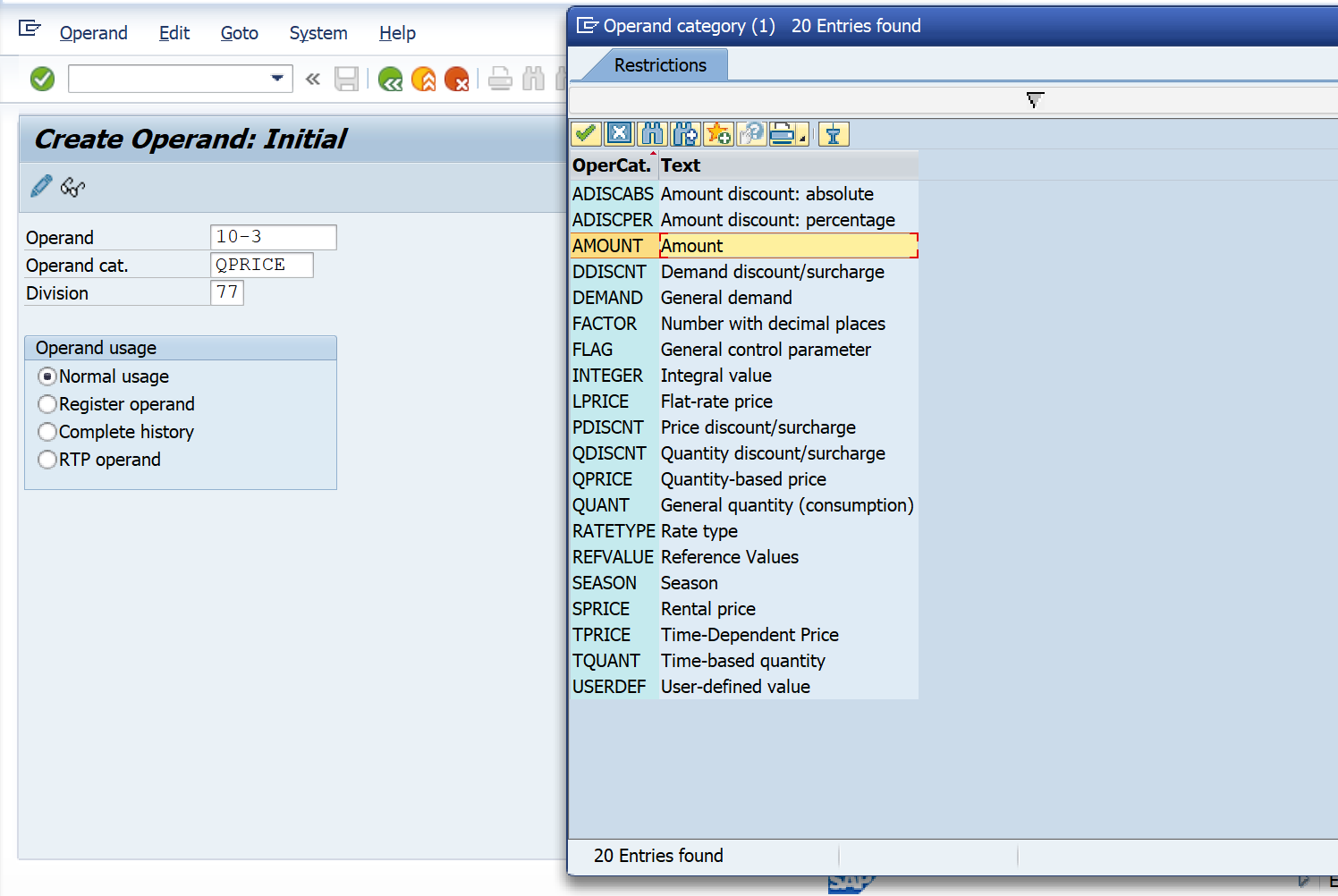
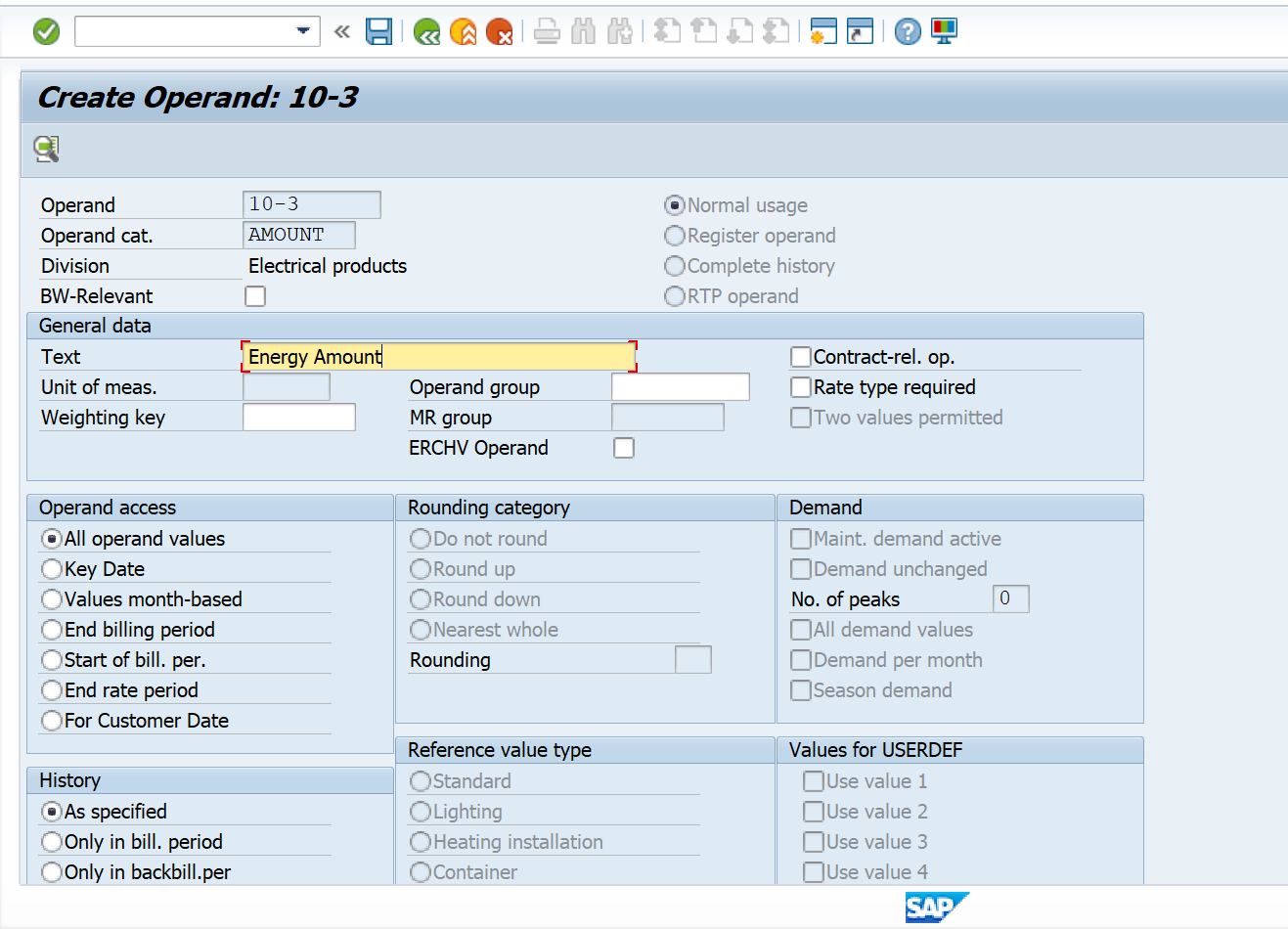
Step 3: Once we done operand, we need to customize Rate.
Before that we need to use 1 variant program. “Quanti01”
Variant program are function module which contains billing rule. For example, one of the billing rule is consumption quantity (KWH) X price ($)= Total charge amount ($) is accomplished by variant program QUANTI01
Rate: It contains one or many steps of calculation, each step use variant program, it ll create a billing line item.
Path- SPRO—SAP Utilities—Contract Billing—Billing Master Data—Rate structure—Rate—Define Rate
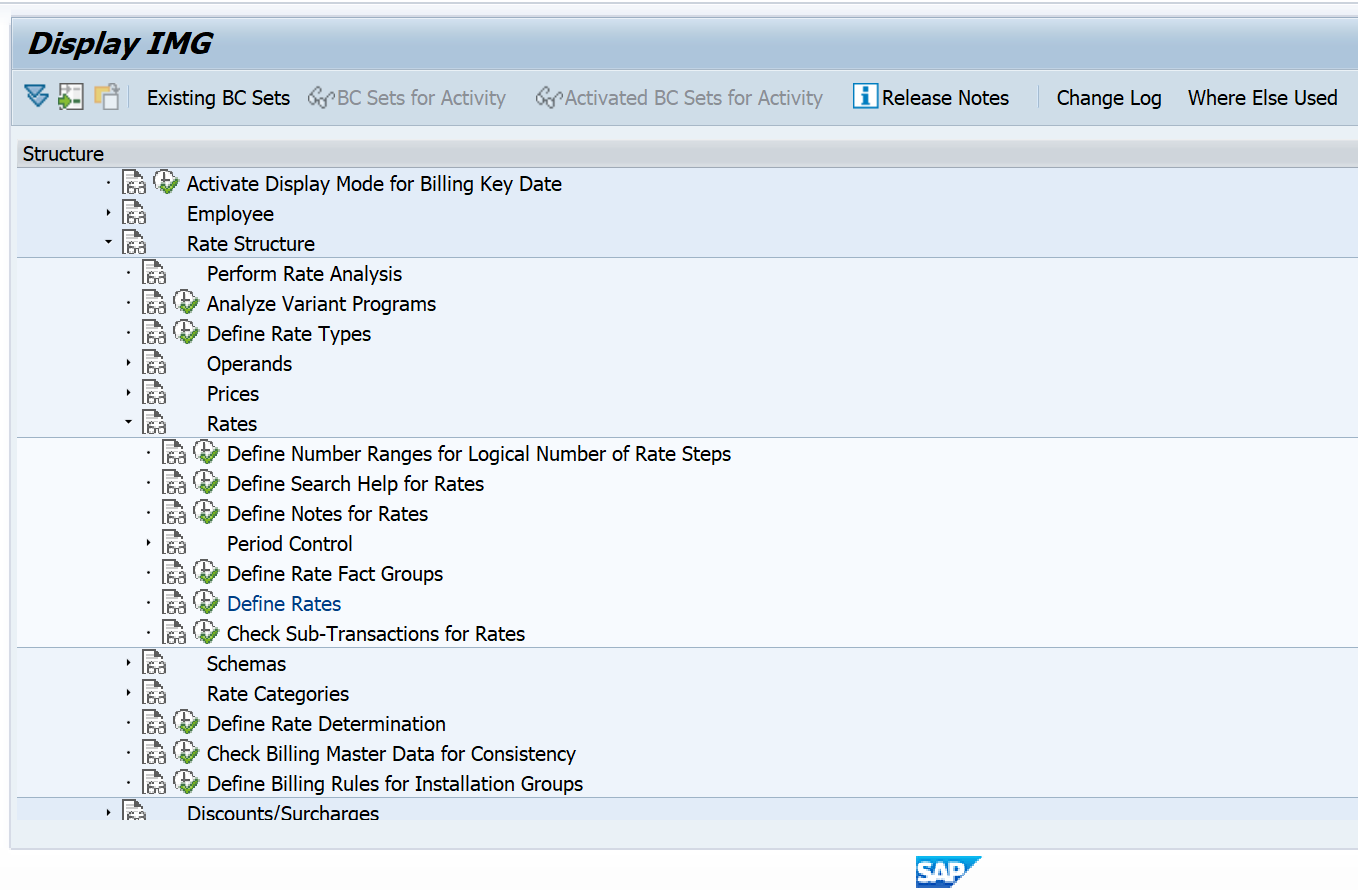
TCODE: EA30


Whatever operand we created we have to assign here along with sub-transaction.
Here we have to create sub-transaction.
Debit Sub-transaction-
Credit Sub-transaction-
Budget bill Debit Sub-transaction-
Budget bill Credit Sub-transaction-

Let’s create 4 sub-transaction for rate; here is the integration with FICA
Path- SPRO—FI(New)-CARP—Basic function—Document—Maintain documents assignment--

Step 5: Here we need to define main transaction
Main transaction is define for posting FICA documents, it is use to identify reconciliation GL account.
Here we shall use standard main transaction.

0100: Consumption billing
Let’s define in sub transaction:
We can assign existing sub-transaction for consumption billing:

Budget bill Debit Sub-transaction-0120
Budget bill Credit Sub-transaction-0110
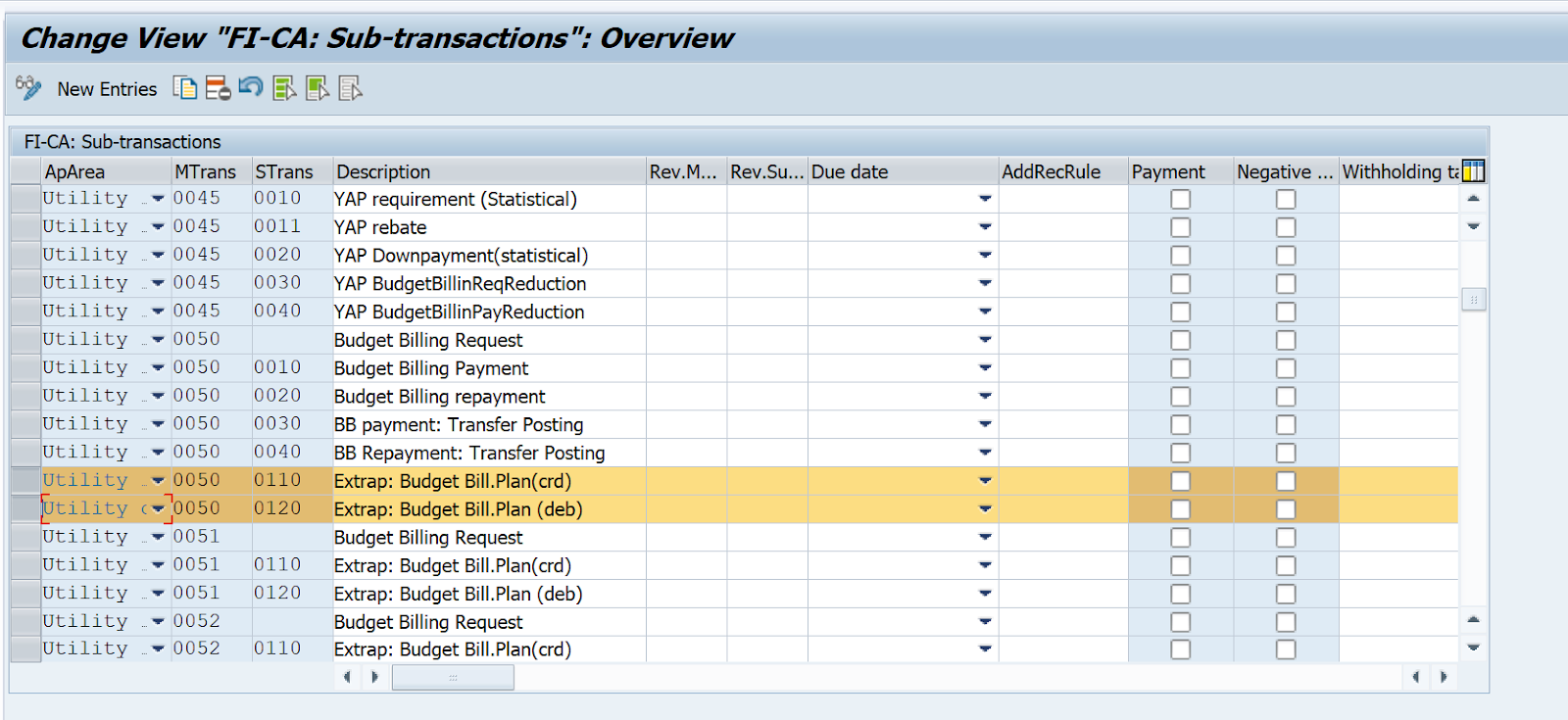
Now we have to assign with our division and company code:
Maintain transaction for ISU:

Budget Billing:

Later on we have to do account determination for billing. Now let’s go back to rate

Step 6: Now need to create schema:
TCODE: EA35
Schema contains the rate and variant program
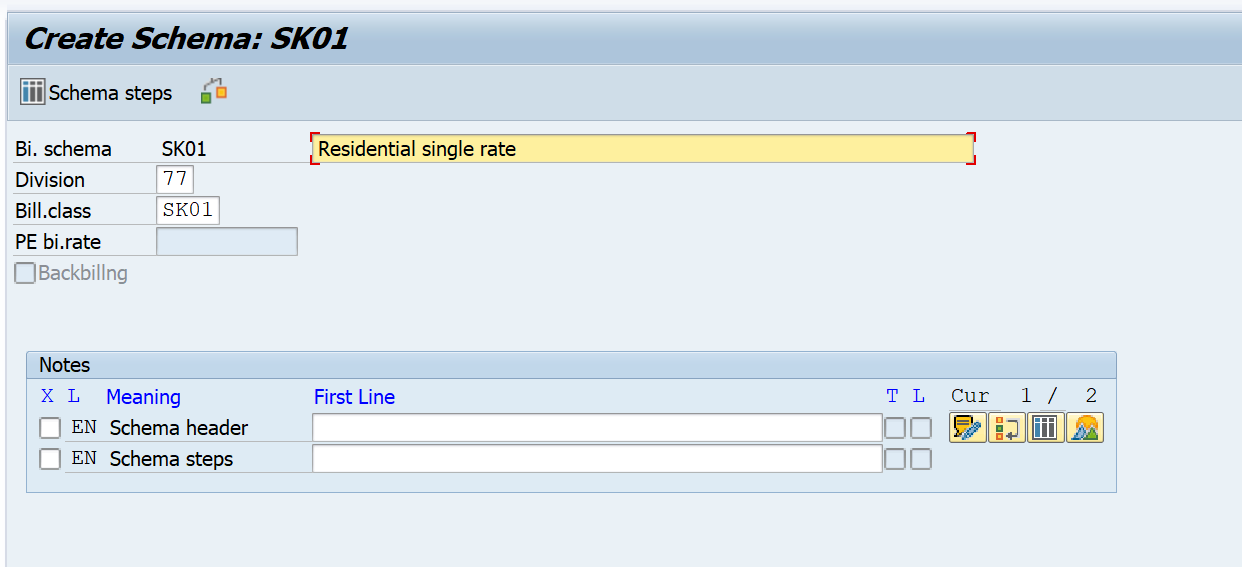
Insert rate:

Here we have to maintain pre-shorting key: 0002

Step 7:
Now we have to create rate category:
It is classification of an installation for billing purposes. It contains one valid billing schema and determines which out-sorting billing checks occur during billing.
2. Operand
3. Rate
4. Schema
5. Rate type
6. Rate Cat.
7. Rate determination
8. Fact Groups
9. Price
Billing Class: Billing class classifies the installation, It group together multiple numbers of installations
According to billing class the rate category will be define.
For Ex: 1 billing class for Residential customer, 1 billing class for commercial customer and so on. If you go to ES30, We can see billing class and rate category.
Path- SPRO—SAP Utilties—Contract Billing—Billing Master Data—Define Billing Class
Here we define SK01 as our Billing class as a Residential customer.
Step2:
TCODE: EA50 –Operand
Operand is variable, Like if you calculate your energy bill: Ex: 100KWH is your monthly consumption,
If per unit charge= 10 then Amount= 100(Consumption)*10(Price), Here we are having 3 component so that mean we have to create 3 variable for each component.
Operant usage: It is defined as access control. When we do billing the variable here we maintain as 10-1 (Operand) in KWH but how the value would calculated that is based on meter reading consumption and register is calculated as consumption. So the value 10-1 comes from the meter reading result what we enter in the system from register.
Normal usage: We can use this as normal price variable , Value of the operand comes from the fact, if you want change , you may change it through price key. It will show at fact level.
RTP Operand: When we having smart meter, it will give consumption in interval. Let’s say 15 min. or 30 min, we ll received consumption but we can’t bill at every interval, so we need to have RTP design.
Price operant: 10-2
Step 3: Once we done operand, we need to customize Rate.
Before that we need to use 1 variant program. “Quanti01”
Variant program are function module which contains billing rule. For example, one of the billing rule is consumption quantity (KWH) X price ($)= Total charge amount ($) is accomplished by variant program QUANTI01
Rate: It contains one or many steps of calculation, each step use variant program, it ll create a billing line item.
Path- SPRO—SAP Utilities—Contract Billing—Billing Master Data—Rate structure—Rate—Define Rate
TCODE: EA30
Whatever operand we created we have to assign here along with sub-transaction.
Here we have to create sub-transaction.
Debit Sub-transaction-
Credit Sub-transaction-
Budget bill Debit Sub-transaction-
Budget bill Credit Sub-transaction-
Let’s create 4 sub-transaction for rate; here is the integration with FICA
Path- SPRO—FI(New)-CARP—Basic function—Document—Maintain documents assignment--
Step 5: Here we need to define main transaction
Main transaction is define for posting FICA documents, it is use to identify reconciliation GL account.
Here we shall use standard main transaction.
0100: Consumption billing
Let’s define in sub transaction:
We can assign existing sub-transaction for consumption billing:
Budget bill Debit Sub-transaction-0120
Budget bill Credit Sub-transaction-0110
Now we have to assign with our division and company code:
Maintain transaction for ISU:
Budget Billing:
Later on we have to do account determination for billing. Now let’s go back to rate
Step 6: Now need to create schema:
TCODE: EA35
Schema contains the rate and variant program
Insert rate:
Here we have to maintain pre-shorting key: 0002
Step 7:
Now we have to create rate category:
It is classification of an installation for billing purposes. It contains one valid billing schema and determines which out-sorting billing checks occur during billing.
It is valid for one division only and belongs to single Billing class.
TCODE: EA53
Step 7: Once we create Rate, Now we need to work for Rate type , It is maintained at register level.
Define Rate types
Path- SPRO—SAP Utilities—Contract Billing—Billing Master Data—Rate structure—Rate Type
Step 8:
Rate determination: We have to combine rate cat. And rate type.
TCODE: EA85
Step 9: Now we have to maintain installation data
TCODE: ES30
Here you may see Billing class and Rate Cat are maintained which is coming from billing master data.
In next Blog, we will do Full installation ,Facts and move-in.
Document By: Sadanand Kumar
Post a Comment